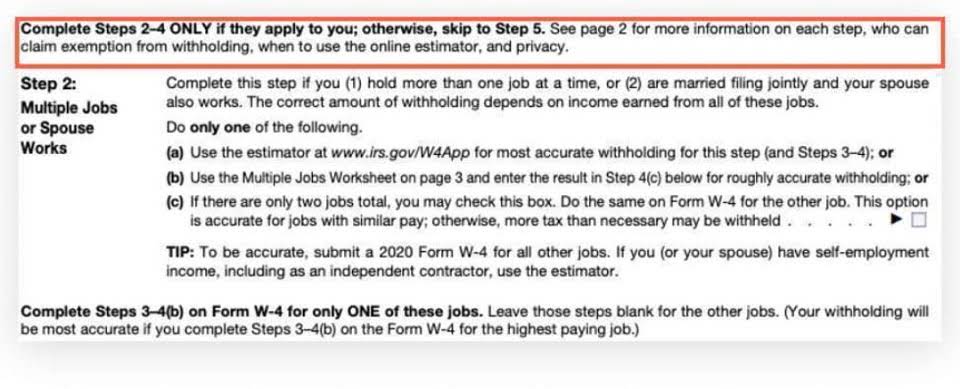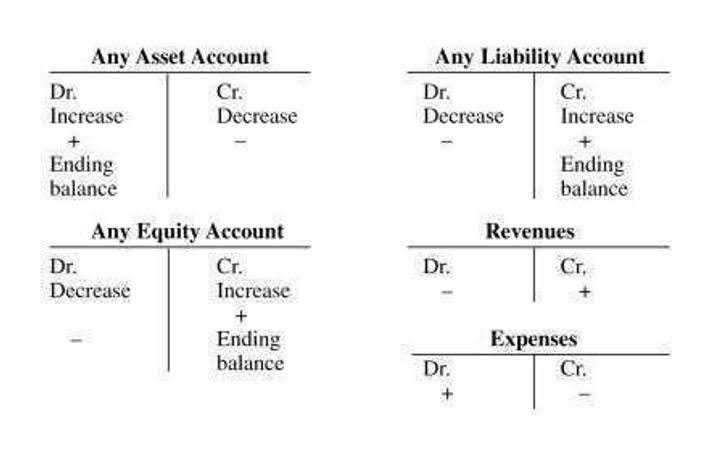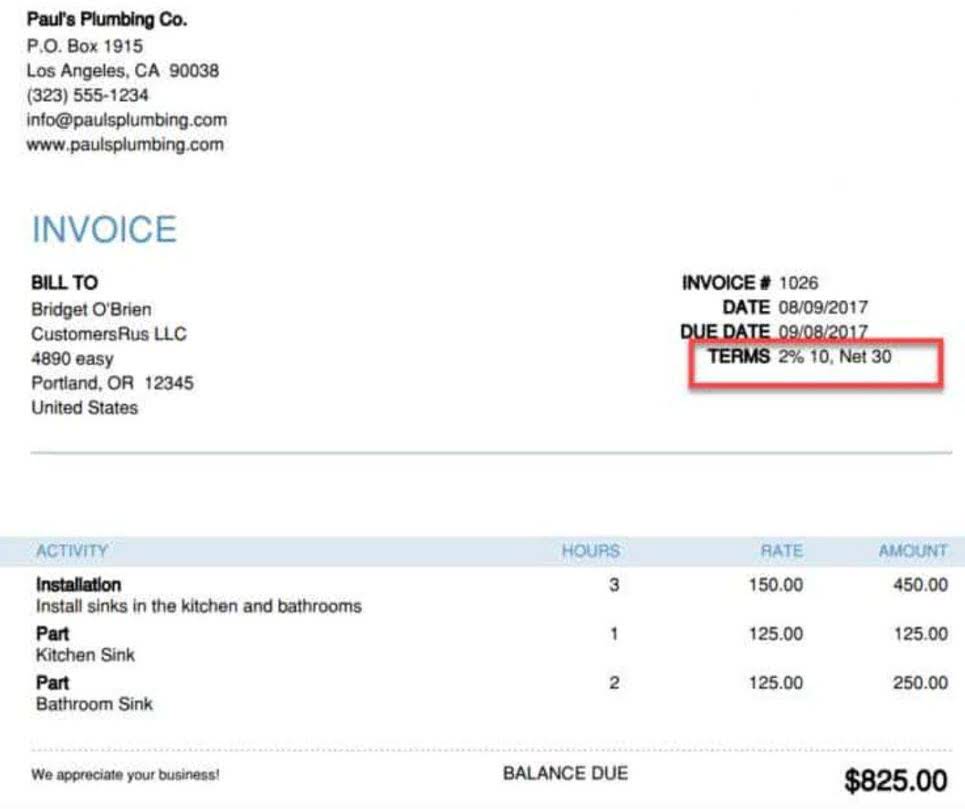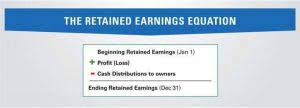Bookkeeping
now browsing by category
Accounting Explained With Brief History and Modern Job Requirements

Bookkeeping typically focuses on recording financial data and ensuring it’s organised, while accounting focuses more on analysing it. However, bookkeeping is the first step in most accounting procedures, so an accountant can likely help you keep and organise sensitive financial information and records. There are 672,,587 certified public accountants in the U.S., according to the National Association of State Boards of Accountancy. This is a person who has training (and likely a college degree) in accounting and can handle bookkeeping chores.
Which of these is most important for your financial advisor to have?
Receiving an inheritance, especially a large one, can result in exorbitant inheritance taxes. Furthermore, you may face a very high tax rate on your income and property. If you have a personal accountant, they will advise you on what to do to ensure that you only pay what is necessary. However, if you invest that money in a life insurance policy, you will receive the entire amount ($300,000 plus interest). To summarize, a personal accountant will assist you in making sound business decisions.
- Cost accountants analyze these expenses to provide better cost management solutions.
- Accountants need a range of skills, including attention to detail, analytical skills, proficiency with financial software, and strong communication skills.
- They’ll prepare all your returns and advise you on the best time to file in order to avoid penalties.
- Accountants possess essential skills, such as attention to detail, analytical acumen, proficiency with financial software, and effective communication.
- The exam is tailored to each state’s requirements and is administered by the state boards of accountancy.
- We recommend that you review the privacy policy of the site you are entering.
- This information is invaluable when making strategic business decisions such as expansion, investment, or cost-cutting.
Ed Barton, LLM, CPA, CFA
Like any external advisor, there can be risks of miscommunication with an accountant. It’s crucial to establish clear lines of communication and understand the services your accountant will provide. Accountants are well-versed in tax codes and can ensure you or your business are in compliance with the law.
Public Accountants
The purpose of these documents is to provide those in leadership positions with the information they need to make better business decisions. If you want an excellent introduction to accounting, I recommend Accounting for Non-Accountants by Wayne Label. It will provide the basics and give the information in plain and unambiguous language. There’s no doubt that the accounting profession has experienced significant change in recent years. While the changes have unlocked a number of growth opportunities, they have also resulted in challenges and issues that today’s firms need to have on their radars. GAAP, which is required for for-profits, non-profits, and government entities, used to be considered reactionary or historical accounting.
Management accounting
People who earn more than $200,000 have a 3.7% chance of being audited by the IRS. The odds are even higher for those who earn more than a million dollars (12.5%). But people making that kind of money don’t exactly need to be told to hire a personal accountant. what do personal accountants do A personal accountant prepares all necessary documents for filing taxes, manages bookkeeping, and keeps an eye on all financial innings and outings. They are a helping hand for everyone who feels like they are struggling with these tasks.
What are the different types of accounting?
Similarly, your accountant can negotiate a payment plan with creditors, the IRS, credit card companies, and even banks on your behalf. After all, the accountant is familiar with your financial situation and will be objective when negotiating. For starters, they will handle the majority of the financial planning.

For Small Businesses

They take the complexity out of tax planning and deductions, ensuring you comply with all regulations while benefiting from eligible deductions and credits. Many people are hesitant to hire a personal accountant or financial advisor. I understand because most service providers charge so much money that it is not even worthwhile to use their services. A certified public accountant is someone who has earned a state license that attests to a high level of skill, training, and experience.
Important Accounting Skills
The Smartest Dividend Stocks to Buy With $5,000 Right Now The Motley Fool
If the stock is overvalued, you may want to hold onto cash dividends, even if you plan on reinvesting the money in the future. If the stock price plummets after you’re paid, then you would have made more money from a simple cash payout. However, this risk can also work to your benefit, just as with any other way you invest your money. If the stock price goes up after you receive your share of the profit, the payout can be higher than it would have been with a cash profit payment. Stock dividends increase ownership without immediate cash payout, supporting long-term growth, while cash dividends provide immediate income but reduce cash reserves.
- Total revenue increased from $29.1 billion in fiscal 2021 (ended Sept. 30) to $36 billion in 2023.
- Visa’s free-cash-flow generation has also improved over these three years, going from $14.5 billion to $19.7 billion.
- Cash dividends are portions of a company’s earnings paid to shareholders.
- Once it issues the dividend, the money goes directly to the shareholder, who can use it to buy additional shares or simply accept it as income.
- However, that would incur additional interest costs on top of the dividend issuing costs.
Impact on Ownership Stake
Our goal is to help every Canadian achieve financial freedom and make all levels of investors smarter, happier, and richer. V’s net revenue for the third quarter (ended June 30, 2024) increased 9.6% year-over-year to $8.90 billion. Its operating income amounted to $5.94 billion, indicating an 18.2% growth from the prior year quarter. The company’s non-GAAP net income came in at $4.91 billion and $2.42 per share, up 9.1% and 12% year-over-year, respectively.
Dividend Yield and Payout Ratio
This way, you can follow current news related to those businesses without searching for them. In addition, You will learn more about the company’s issues and opportunities and find out information about its competitors. Over time, you will grasp how the stock market works by adding stocks you are interested in into your Yahoo app portfolio.
Stock Dividends vs. Cash Dividends: What’s the Difference?
Considering the fact that the equity shareholders are the owners of a company, they enjoy a claim on the profits that the said company generates. These profits that are generated by a company are periodically distributed to the shareholders by way of dividends. Since these dividends act as a source of steady income for equity shareholders, many investors adopt a dividend investing strategy. For example, say that another company announces that they’ll reward their shareholders with a 10% stock dividend.
The only risk is the same risk of inflation that affects any cash savings you keep. The need for firms to keep enough cash on hand each quarter to hand out profit payments to stockholders means they must maintain more stable earning https://www.maudiepapercrafts.com/2017/11/page/2/ structures. This subtly reminds the people at the top that they’re there to produce wealth for the owners of the business, not just make their empire bigger. Companies that issue a stock dividend see no impact on their cash balance.
- Moreover, during economic contractions, these companies continue to pay high yields.
- Taxes do need to be paid, however, if a stock dividend has a cash-dividend option, even if the shares are kept instead of the cash.
- All stock dividends require an accounting journal entry for the company issuing the dividend.
- Moreover, the financial services market is anticipated to reach $44.93 trillion by 2028, exhibiting a CAGR of 7.6%, further strengthening the appeal of dividend-paying stocks in this space.
The Smartest Dividend Stocks to Buy With $5,000 Right Now
- Compared to its Energy sector average of 49.5%, Alliance Resource Partners’s payout ratio is 40% higher.
- However, if share prices increase, the shareholder can sell their stock dividends and earn a return on their investment.
- Most brokers offer a choice to reinvest or accept cash dividends.
- Our Super App is apowerhouse of cutting-edge tools such as basket orders, GTT orders,SmartAPI, advanced charts and others that help you navigate capitalmarkets like a pro.
- Over the long term, this approach can create significant growth.
- A company’s dividend policy can reflect its profit and financial strategy.
On the other hand, cash dividends are one-time assured payouts that happen as part of dividend declarations. Remember that there is no compulsion for companies to declare dividends. It is rather just a benefit or a reward that companies give the shareholders for having placed their trust (and money) in the company.
Once it issues the dividend, the money goes directly to the shareholder, who can use it to buy additional shares or simply accept it as income. In many jurisdictions, qualified dividends are taxed at a lower rate than ordinary income, making them a more tax-efficient way for investors to receive returns on their investments. This favorable tax treatment can enhance overall returns, particularly for individuals in higher tax brackets. By opting for cash dividends, investors can maximize their income while minimizing their tax burden, leading to improved after-tax returns. This aspect makes dividend-paying stocks appealing for tax-conscious investors seeking to optimize their investment strategies. Decision factors include cash reserves, company health, and growth plans.
Investor profile best suited for different dividend payouts
Back then, the quarterly dividend was just $0.0263 per share but it has now grown to $0.52 per share, an increase of nearly 20-fold. On a compound annual growth rate basis, Visa’s dividend has increased by around 20.5% per annum over 16 years, http://portrait-photos.org/keywords/nature?skip=195 a truly impressive feat. Sharing cash dividends often drops the share’s market price by about the dividend amount. For example, if a share costs $10 and a dividend is given, the share’s price might fall by the dividend’s value afterwards.
In short, if a company follows a consistent stock dividend policy it offers a few benefits to both shareholders and the company. Shareholders would lose their proportional shareholding in the company if they sell http://www.extremeplanet.ru/node/114721 stock dividends and convert them into cash. A stock dividend is a dividend paid in the form of additional shares rather than cash. However, keeping up with the expectations of the shareholders can be costly.
Dividends: Definition in Stocks and How Payments Work
Consistency and transparency in dividend management are key to building trust with investors and avoiding potential legal issues. When a company issues additional stock shares for any reason, the result is stock dilution. More shares in circulation means a reduction in the earnings per share (EPS) of the existing shares, and in the ownership percentage held by each current shareholder. It is treated as current liabilities because paying out dividends can be completed within 12 months.
Dividends Payable Account
Nonetheless, the board of directors should be aware of the negative impact of a large dividend payable on a company’s current ratio, which could drop enough to breach a loan covenant. Nonetheless, the result of a dividend payment is the departure of cash from the company and represents a legal obligation to pay, so dividends payable should be considered a valid liability. Also, dividends may be paid out from the cash account or retained earnings account. The relationship between dividends and the balance sheet can also be analyzed in the statement of stockholders equity accounts. Stock dividends may signal financial instability or at least limited cash reserves.
In this case, the formula used is dividends per share divided by earnings per share (EPS). EPS represents net income minus preferred stock dividends divided by the average number of outstanding shares over a given time period. One other variation preferred by some analysts uses the diluted net income per share that additionally factors in options on the company’s stock. Recording dividend payments in the cash flow statement is crucial for showing a company’s financial activities accurately.
Ask Any Financial Question
A stock dividend may be paid out when a company wants to reward its investors but either doesn’t have the spare cash or prefers to save it for other uses. The stock dividend has the advantage of rewarding shareholders without reducing the company’s cash balance. Dividends Payable is classified as a current liability on the balance sheet, since the expense represents declared payments to shareholders that are generally fulfilled within one year. A dividend is a payment that a company chooses to make to shareholders when the company has a profit. Companies can either reinvest their earnings in themselves or share some (or all) with its investors. Dividends represent income for investors and are the primary goal for many.
However, it’s not a good look for a company to abruptly stop paying dividends or pay less in dividends than in the past. Dividend payable must pay obligation on the company, within the specified period and through the authorized banking partners. Moreover, it must be paid under the guidelines the concerned nation’s chief organization sets, keeping watch on the stock market. Once declared, disclosure of the dividend will take place under the current liability until paid.
A shareholder with 100 shares in the company would receive five additional shares. It is displayed as declared payments to shareholders that have been announced by the Board of Directors but are yet to be distributed to the concerned stockholders. On the payment date, the company deposits the funds for disbursement to shareholders with the Depository Trust Company (DTC). Cash payments are then disbursed by the DTC to brokerage firms around the world where shareholders have accounts that hold the company’s shares.
Dividends are always considered taxable income by the Internal Revenue Service (IRS), regardless of the form in which they are paid. Company-operated DRIPs are usually commission-free, since they bypass a how is overhead allocated in an abc system broker. This feature is particularly appealing to small investors since commission fees are proportionately larger for smaller purchases of stock.
What would happen if a company were unable to pay the dividends that they owe to their shareholders?
You should consult your own legal, tax or accounting advisors before engaging in any transaction. The content on this website is provided “as is;” no representations are made that the content is error-free. Dilution is a downside of a stock dividend if the company’s net income does not increase proportionately. 11 Financial is a registered investment adviser located in Lufkin, Texas. 11 Financial may only transact business in those states in which it is registered, or qualifies for an exemption or exclusion from registration requirements. The common practice concerning the Dividends Payable account treats it as a current liability if the amount is to be paid within 12 months.
By seeking legal advice and staying updated on laws and how to integrate credit card processing into xero guidelines, companies can avoid problems when declaring dividends payable. It’s important to assess the company’s financial health accurately before distributing dividends. In a company, dividends are like sharing the profits with the shareholders. By learning about dividends on a balance sheet, you understand how much money the company is giving back to its shareholders. This can help you make better decisions about investing in the company’s stock. If dividends are to be paid, a company will declare the amount of the dividend and all relevant dates.
- The ultimate effect of cash dividends on the company’s balance sheet is a reduction in cash for $250,000 on the asset side, and a reduction in retained earnings for $250,000 on the equity side.
- Unlike cash dividends, stock dividends are not taxed until the investor sells the shares.
- A journal entry for a small stock dividend transfers the market value of the issued shares from retained earnings to paid-in capital.
- On the company’s balance sheet, the dividend payable is reversed when declared but not yet paid.
- A sample presentation of the dividends payable line item in a balance sheet appears in the following exhibit.
Instead, dividends affect the shareholders’ balance sheet equity section. When dividends are paid, they reduce the dividends payable liability on the balance sheet. This also affects the statement of retained earnings, which shows the company’s net income minus any dividends paid. Dividends on common and preferred stock both appear on the financial statements. For example, say a company has 100,000 shares outstanding and wants to issue a 10% dividend in the form of stock. If each share is currently worth $20 on the market, the total value of the dividend would equal $200,000.
Some companies continue to make dividend payments even when their profits don’t justify the expense. A steady track record of paying dividends makes stocks more attractive to investors. They show up in the income statement as dividends declared and in the statement of cash flows as dividends paid. Dividends also impact the balance sheet by increasing the liability in the dividends payable account. Dividends payable to shareholders are not considered an expense on a company’s income statement. It is because cash dividends do not affect a company’s net income or profit.
Suppose a corporation currently has 100,000 common shares outstanding with a par value of $10. The dividend discount model or the Gordon growth model can help investors choose individual stocks. These techniques rely on anticipated future dividend streams to value shares. The dividend yield of a stock is the dividend amount paid per share and is expressed as a percentage of the company’s share price, such as 2.5%. Ultimately, addressing legal obligations and conducting due diligence helps companies maintain trust with investors and regulators. This approach not only protects the company from legal risks but also shows a commitment to ethical standards.
What is a Sales Invoice? 11 Free Templates, Examples & Types
This marks the start of the timeline during which payment will come due (more on payment terms later), which helps both buyer and seller budget properly. http://www.luxurynet.ru/world-market/11627.htmls sent to international clients are called commercial invoices. In order to cross the border, these documents include extra details such as country of manufacture, freight cost, product weight, and more.
A Quick Guide to GAAP Accounting for Your Business
In this section, we show you what an invoice looks like and define the key components you’ll see on an invoice. The recommended way to send this invoice to a customer (other than by printing and mailing it) is to first convert the invoice worksheet to a PDF file and then email the PDF file. Try FreshBooks invoicing software to streamline invoicing and billing processes, so you can focus on doing what you love. If a client does not provide payment by the due date on the final invoice, a past-due notice is sent out, with penalty fees or interest charges.
Software Tools for Managing Sales Invoices
Nowadays, there are lots of tools that can help you craft your invoices in advance. Pay attention to all the details included in the document for your customers to find it understandable and simple to follow. Well, in the business realm, especially when it comes to Business-to-Business (B2B) transactions, the stakes are higher. The nature of how business sells physical products or services, the volume, and the agreements—all of it changes. You need something more comprehensive, and that’s where the http://vverh-tatarstan.ru/news/2016.10.14/Alabuga-snova-priznana-luchshei-OEZ-v-Evrope/328 comes into play.
How to Establish a Smooth Sales Invoice Process
There are a few different types of sales invoices and documents that every business should know about and understand. Depending on your line of business, each of these may play an important part in the sales process, so it’s essential to understand their purpose and how they work. There are several different ways to issue invoices along with different payment methods.
- This doesn’t seem to be an ideal situation, and there are some ways to minimize this disturbance and maintain good customer relationships.
- Nowadays, there are lots of tools that can help you craft your invoices in advance.
- Unlike our service invoice, the sales invoice includes shipping information and lets you specify the item number, quantity, and unit price.
- I’ve used lots of invoicing solutions over the last decade or so including Wave, QuickBooks, Stripe, and HubSpot’s Commerce Hub.
- This is why it’s important to put a logo on it and add the company’s colors to make the invoice even more memorable.
Sales Invoice vs. Tax Invoice
In case of a regular, ongoing service or product order, you can have an invoicing schedule in place to ask for payments. Notice that in each of these examples, the http://web24.ru/studio/articles/razvertyvanie-klyuchevyh-biznes-prilozheniy.html is a professional and definitive document. Sales invoices exist to ensure that customers pay on time and in full; without them, sales teams and accounting departments would never know when to expect income, or in what amounts. The average business spends an average of 14 hours a week on tasks related to collecting payments from clients. A smooth invoicing process helps eliminate some of that frustrating work.
Payment methods
- When your customer’s journey ends, make sure you’re ready to provide them with everything they need to pay you.
- For those just starting or on a tight budget, Wave offers free invoice management (with some paid premium features).
- Retailers, wholesalers, and e-commerce businesses in the US selling physical products use sales invoices for effective inventory management.
- Make it clear that you (or someone on your accounting team) are on hand to answer questions, too.
- Sign up, and try the software out yourself with our completely free trial!
Access to this page has been denied
Content
- The Top Accounting Software Solutions for Construction Companies
- Benefits of Construction Accounting Software
- Construction Accounting software toolkits
- What Software Does Your Construction Business Need?
- More Profitable Projects
- Do Your Professional Services Have ComplexNeeds and a Growing Team?
- Best for Bid Management
When you glance at this overview of construction accounting systems, you’ll see what each app is best used for, and where the pricing starts at. Whichever construction accounting software you settle on, we recommend requesting a demo, grilling your customer service rep, and signing up for a free trial whenever possible. You deserve the best construction bookkeeping real estate bookkeeping and ERP software for your business—and those steps will go a long way towards helping you find it. Unfortunately, Buildertrend also has limited accounting tools. You can create invoices, take payments online, and set a basic budget, but that’s it. The software integrates easily with QuickBooks Online or Xero , but both add an additional monthly fee.
- It’s important that construction companies compare pricing to ensure that the amount they’re paying is sustainable and will pay for itself in improved efficiency.
- In fact, according to the American Institute of Certified Public Accountants, construction firms that use inefficient software lose billions annually due to poor management practices alone.
- We looked at third-party ratings and reviews to see how actual users felt about the software.
- This is one reason it has received several industry awards, including Software Advice’s 2021 Front Runner award and making Capterra’s Shortlist.
Construction companies have unique accounting needs, which can make choosing a construction accounting software solution more challenging. Here’s our list of some of the top accounting solutions out there for those in the construction business. Jonas Premier is a cloud-based software designed to meet the needs of general and specialty contractors, home builders and land developers to help streamline and optimize business processes. Monitor project statuses off-site using mobile devices.It allows subcontractors to sign documents electronically.
The Top Accounting Software Solutions for Construction Companies
Use our review as a starting point to identify a couple of options, and then continue your research. Your research can also include soliciting opinions from other contractors or companies. Any successful construction project requires detailed tasks, time, and project tracking. These critical features are available in ZipBooks, along with the ability to use the data to generate reports quickly. Since ZipBooks is browser-based, contractors can access these features easily onsite via Wi-Fi or a cellular hotspot. The Starter Plan also allows unlimited invoicing and the ability to use Square or PayPal to accept digital payments.
While it has its own advanced tools, it also works seamlessly with other apps for creating proposals, nurturing customers, preparing taxes, and analyzing data. Its integration with Zapier allows you to create cross-app workflows with thousands of third-party platforms. So, you won’t need to throw out your established digital workspaces just to adopt Freshbooks. But, if you are looking to save money from subscribing to a fat stack of digital tools, then thanks to its comprehensive features set, you can offload many processes to Freshbooks. It is a go-to solution for many companies of different sizes, from small contractors to large-scale construction companies.
Benefits of Construction Accounting Software
But, it can be a very good tool that saves a lot of money through more efficient RFP process and scheduling.”Rebecca S. “Quickbooks has helped me keep track of my account books in one place, therefore, reducing confusion. Less automated as compared to the online version which takes more time.””Belasco S. “Better internal and external communication, budgeting, accounting, and finance control. User-friendly software which Increased our productivity.”Kat P. Organised procurement is nowadays a key to proper and economic resource management. With Archdesk, you can obtain absolute control over your purchase orders.
It helps identify and prevent issues before they impact profitability. It notifies users about overtime hours, unbilled change orders and unexpected material costs. Sage 300 is a construction and real estate focused software solution with project-wide organizational capabilities. Its cloud-based integration connects all points of a construction project to an easily accessible location. It helps project managers control and view the entirety of a project’s lifecycle. It streamlines and organizes accounting processes and is suited for operations of all sizes.
Construction Accounting software toolkits
Furthermore, a general ledger system for tracking finances is an application designed to help companies manage their daily cash flow. Like Quickbooks, most general ledger systems offer basic functions related to managing monthly income and expenses. Most general bookkeeping programs allow you to create an account for each customer, vendor, employee, etc. and then enter transactions into these individual records. This construction accounting software guide will review the aspects of leading construction accounting software solutions and what features are critical to your company’s growth. We’ll show you why some are better than others and help you find the best fit for your needs.
These features combined remove much of the overhead generated by keeping the customer informed of project costs or schedule changes. PENTA Construction Management Software’s scope and cost suggest it is a package best used by construction firms performing multiple large-scale projects. Using the on-premises version of PENTA also requires an Oracle database, a factor any company https://www.projectpractical.com/accounting-in-retail-inventory-management-primary-considerations/ needs to consider when considering budget allocation for PENTA implementation. Run profit and full job cost reports to always know where you stand. With major accounting software companies such as Xero and Zoho. By using GoCardless with your accounting software, you can automatically collect payments on their due date, and have this amount reconciled immediately.
Sales Forecasting: What It Is, The Process, and Best Practices

Sales forecasting helps your business by giving you data to make decisions concerning allocating resources, assigning staff, and managing cash flow and overhead. There are a variety of causal methods but regression analysis is the primary method used to analyze cause-and-effect patterns. Regression analysis relates sales to other variables such as competition and the economy. This method either copies forward the past data into the future without changing it or projects an average of past results. It’s possible to get even more specific with the analysis by separating out trend, cyclical and seasonal components and then forecasting each of them.
Various techniques, such as moving averages and exponential smoothing, help smooth out random fluctuations and highlight underlying trends. Regression analysis examines the relationship between a dependent variable and independent variables to predict future outcomes. Econometric modeling utilizes mathematical equations and statistical techniques to simulate complex economic systems and forecast variables based on economic theories. With the emergence of AI and automation, new tools are available that make sales forecasting more connected, efficient and predictable. Revenue operations platforms bring a new way to generate revenue with the same level of transparency and rigor that companies expect from any other mission-critical business process (ERP, supply chain, etc…). Once you’ve identified your sales forecasting method and process, you’ll need some tools to help you manage, monitor and execute on your sales forecast.
Analyze Your Sales Process
Naive forecasts are used as comparative figures for more robust methods. Judgmental forecasting methods combine qualitative and quantitative inputs, organizations usually use only one method for forecasting sales incorporating expert opinions and statistical models. This approach leverages the strengths of both methods to enhance forecast accuracy.
A financial analyst uses historical figures and trends to predict future revenue growth. Sales forecasting is a data-driven approach to making sales and business decisions that grow a company. While there are many different ways to approach sales forecasting, there are some best practices every business can follow to ensure accurate and reliable results. Benchmarks help companies understand the sales process and identify wins and shortcomings.
Opportunity stage forecasting
This article discusses particular methods, examples, and pointers to create a viable sales forecast. The best way to forecast your sales is to use whichever method is based on your historical sales results. When your sales projections are very close to your actual sales numbers, within a reasonable margin, you know you’re using the right method. This includes relevant data, information from your CRM, and tools you may need to complete your forecasting method of choice. You’ll see a spike in close rates in the first two weeks, followed by fewer sales than normal.
- You then estimate how much market share you’ll be able to capture and the revenue you’ll be able to acquire.
- With a sales forecast, you get a detailed prediction of what an individual salesperson, sales team, or your entire organization, will sell in a given time period—weekly, monthly, or annually.
- The sales process should tell team members what actions to take at each stage of the buyer’s journey, from prospecting to closing.
- This method can quickly get cumbersome and time consuming without an analytics solution.
- A con of qualitative sales forecasting is that it can be risky and require a lot of resources to build these models.
- You can also break them down to an individual level based on performance.
If you don’t have historical data, you can use industry benchmarks from trade publications, industry associations, and consultants. For example, if you are launching a new recipe app, look at market research on how other cooking apps have performed. Take into account changes in the business environment and question assumptions, such as that past growth will continue. Also, be sure to factor in your ideas about global economic trends and competitor behavior.
Regression or Multivariable Analysis Method
These forecasts allow you to spot potential issues while there’s still time to mitigate them or avoid them completely. Without a sales forecast, your team could be trending below quota without being able to course correct. Easily calculate drop-off rates and learn how to increase conversion and close rates.

An accurate forecast considers this sales pipeline risk to either increase the top of funnel deals, fix the pipeline stage, or focus on leads with a higher intent to buy. By relying on data, sales managers work with individual sales team members to inspect pipeline, understand projections for future sales, and analyze sales activity data to produce a number. Then, the managers collect all of these numbers from across the organization and add them up to create the total sales forecast. For this approach to sales forecasting, you need to first assess your total available market (TAM). Your TAM is crafted by researching market valuations from reputable sources, such as Gartner or Forrester.
What is a Journal Entry in Accounting? A Guide
In the second step of the accounting cycle, your journal entries get put into the general ledger. Hence, we will not write journal entries for most of the business transactions. It’s journal entry No. 1, the account number is included after the account name, and the office supplies account has been debited and the cash account credited. As such, it’s important for legal professionals to understand the fundamentals of how accounting entries work. Complete and accurate journal entry accounting is crucial for proper financial recordkeeping and reporting for all businesses, including law firms. Manual journal entry accounting, however, can be tedious and isn’t typically an area of expertise for most lawyers.
To increase an expense account, you would need to debit the account, and to decrease your cash account, which is an asset, you would need to credit the account. Read more about accounting and bookkeeping best practices for law firms in our article here. You may also need to make adjusting journal entries to correct for errors like a missed or incorrect entry previously made. For example, a standard journal entry for the payment of $1,200 in bar association fees in cash would show a debit of $1,200 and a credit of $1,200 in cash.
A journal entry records a business transaction in the accounting system for an organization. Journal entries form the building blocks of the double-entry accounting method that has been used for centuries to keep financial records. They make it possible to track what a business has used its resources for, and where those resources came from.
Examples of Journal Entries
For the past 52 years, Harold Averkamp (CPA, MBA) has worked as an accounting supervisor, manager, consultant, university instructor, and innovator in teaching accounting online. We’re firm believers in the Golden Rule, which is why editorial opinions are ours alone and have not been previously reviewed, approved, or endorsed by included advertisers. The Ascent, a Motley Fool service, does not cover all offers on the market. Sage 50cloud Accounting offers plans suitable for one-person offices as well as businesses that require multi-user capability, with the Quantum edition supporting up to 40 users. Whichever way they’re recorded, they are a necessity for any business. First, you need to determine which transaction you’ll be recording.
If you’d like to learn more about other small business accounting applications, be sure to check out our small business accounting software reviews. QuickBooks Online offers features such as automatic bank feeds, which will greatly reduce the number of journal entries that need to be created. Below is an example journal entry that was completed based on the above financial transaction. You’ve identified the accounts that will be involved in your journal entry, as well as the type of accounts they are. At the end of the financial year, you close your income and expense journals—also referred to as “closing the books”—by wiping them clean.
What is a journal entry in accounting?
With Clio Manage handling your cases and Clio Accounting managing your financials, you can streamline operations and minimize manual entry errors–enhancing your firm’s performance visibility from intake to payment. Discover the power of Clio’s tools and book your personalized demo today. If you use accrual accounting, you’ll need to make adjusting entries to your journals every month. Just as every action has an equal and opposite reaction, every credit has an equal and opposite debit. Since we credited the cash account, we must debit the expense account.
That way, you can start fresh in the new year, without any income or variable cost ratio expenses carrying over. Going through every transaction and making journal entries is a hassle. But with Bench, all of your transaction information is imported into the platform and reviewed by an expert bookkeeper. No more manually inputting journal entries, thinking twice about categorizing a transaction, or scanning for missing information—someone else will do that all for you. The total amount you enter in the debit column equals the total amount entered in the credit column. A reversing entry is typically an adjusting entry that is reversed as of the beginning of the following period, usually because an expense was to be accrued in the preceding period, and is no longer needed.
- At the end of the financial year, you close your income and expense journals—also referred to as “closing the books”—by wiping them clean.
- To make a journal entry, you enter the details of a transaction into your company’s books.
- Particularly well-suited for retailers and online sellers, AccountEdge Pro offers integration with Shopify and UPS Shipping.
The best accounting software for documenting journal entries
Thus, a wage accrual in the preceding period is reversed in the next period, to be replaced by an actual payroll expenditure. They show the account in questions in the form of a T, with the account name in the header above the horizontal line of the T, and the vertical line dividing debit and credit columns to left and right. A memo field is also available for you to enter a description of the journal entry.
This template contains the accounts normally debited and credited, so that you can easily fill it out when creating a new entry. The use of templates is not only efficient, but also reduces errors. In manual accounting or bookkeeping systems, business transactions are first recorded in a journal…hence the term journal entry. It’s important to know how to create a proper journal entry, or general entry for your business. Accounting journal entries always follow the double-entry accounting method, with each journal entry always having a debit entry and a credit entry.
Entry #4 — PGS purchases $50,000 worth of inventory to sell to customers on account with its vendors.
As CEO and Co-Founder, Mike leads FloQast’s corporate vision, strategy and execution. Prior to founding FloQast, he managed the accounting team at Cornerstone OnDemand, a SaaS company in Los Angeles. He holds a Bachelor’s degree in Accounting from Syracuse University. The journal entries appear in a journal in order by date and are then posted to the appropriate accounts in the general ledger.
Final thoughts on journal entries in accounting
QuickBooks Online integrates with Clio, which means your law firm can save even more time by using the software together. The integration lets you automatically sync Clio your contacts, bills, payments, trust, and operating transactions to your QuickBooks Online ledgers. For the sake of this example, that consists only of accounts payable. Even though single-entry bookkeeping is simpler, the most common form of bookkeeping today is double-entry. That’s because single-entry gives you a highly limited view of your business’s actual financial status.
As described previously, this includes the transaction date, account names, amount debited, amount credited, a brief description of the transaction, and any other pertinent details. Journal entries are essentially the first step in the accounting process, which is necessary for providing accurate financial records. Since there are so many different types of business transactions, accountants usually categorize them and record them in irs moving expense deductions separate journal to help keep track of business events. For instance, cash was used to purchase this vehicle, so this transaction would most likely be recorded in the cash disbursements journal. There are numerous other journals like the sales journal, purchases journal, and accounts receivable journal. In general, do not use journal entries to record common transactions, such as customer billings or supplier invoices.
Think of the double-entry bookkeeping method as a GPS showing you both your origin and your destination. It will show you where the money is coming from and where it’s going to. Entry #3 — PGS takes out a bank loan to renovate the new store location for $100,000 and agrees to pay $1,000 a month. He spends all of the money on improving and updating the store’s fixtures and looks. On January 10, 2020, Sally ordered $238.87 worth of office supplies from OfficeMart. When the supplies are delivered, she also receives invoice number 4987 from OfficeMart.
Accounting software also automatically calculates and posts closing entries, ensuring that opening balances are correct for the new year. Whichever method you use to record and track journal entries for your business, accuracy, and efficiency should be your primary goals. Recording closing journal entries thus allows a business to reset its general ledger to start the next period with a new journal. If you fall into the second category, let Bench take bookkeeping off your hands for good. You can’t just erase all that money, though—it has to go somewhere. So, when it’s time to close, you create a new account called income summary and move the money there.
A Guide to Nonprofit Accounting for Non-Accountants

Utilizing your accounting software to create financial reports is an accurate method because the report is pulling the data inputted during daily transactions. Cash balances can easily be verified by performing regular bank reconciliations. To create your SCF manually research https://www.bookstime.com/ examples online and compare expense and revenue totals to those produced on other financial statements, like the profit and loss statement. Staying on top of the financial health of your nonprofit organization can feel like a full-time job, but it doesn’t have to be that way.
Tools and Resources
This statement shows that the organization had $30,000 in donations and $20,000 in expenses, resulting in a net income of $10,000. Effective record-keeping and systematic organization are paramount, necessitating the use of robust accounting systems or software tailored for nonprofits. However, the backbone of every successful nonprofit lies in its transparency and accountability, especially regarding its financial health. The earlier you anticipate cash flow issues, the easier it is to address them.
Understanding the Nonprofit Statement of Cash Flows
Start your free trial with Shopify today—then use these resources to guide you through every step of the process. With a lot of competition today, you need to have the marketing skills to promote your event and activities to your nonprofit cash flow statement prospective participants. Initiating the preparation of the Statement of Financial Position requires listing assets, starting with the most liquid assets like cash and receivables, which can be quickly converted into cash.
Practical Strategies for Funding Your Nonprofit’s Operating Reserves
- Your nonprofit leverages (or should leverage) a number of financial statements to maintain consistent visibility into the financial health of the organization and to make decisions that will help prevent misallocation.
- Practice the value of accountability and transparency from your organization’s top to bottom.
- Heliconia Scholarship Foundation shares a financial report with its donors instead of an annual report.
- He’s been a dedicated board member of many nonprofit organizations – including seven years working for Amnesty International USA – where he was the Director of Development and Chief Financial Officer.
This method offers a more accurate representation of the nonprofit’s financial position, capturing all financial obligations and resources. In the nonprofit industry, the cash flow statement is often called the statement of cash flow (SCF). The purpose of this financial document is to focus on the inflow and outflow of assets, specifically cash, during a specific period of time. Without effective financial management, nonprofits run the risk of misallocating their funds, potentially leading to poor program management, wasted resources, and non-compliance with funding guidelines.

If your financing cash flow is negative, it can be a sign that your organization is not making wise financial decisions. Look at your debt-to-income ratio and make sure you are not over-borrowing. Some organizations will even provide a modified statement of cash flow by month over a 12 or 13 months time period as a way of easily picking up on positive and negative trends or historical ups and downs. Gross receipts are the primary difference between nonprofits and for-profit companies filing a statement of activities. Warning signs appear if 10% or less of your company’s cash flow comes from its operating activities consistently. This points to a bigger issue like selling unprofitable goods or services, relying too much on debt for cash inflow, or investing or growing at an unsustainable rate.
Outsourced CFO Services
- Get our FREE GUIDE to nonprofit financial reports, featuring illustrations, annotations, and insights to help you better understand your organization’s finances.
- These could include paying employee salaries and receiving donations or grants.
- But, particularly given the fact of nonprofit life that our “customers” and “payers” are often different entities, there’s only so much we can do to line up that timing to smooth out cash flow.
- An annual operating budget for a university will be very different than a budget for a small local art gallery.
- It recognizes how the value of the asset, such as a company car, decreases over time.
- Data to be used for forecasting can be historical financial trends, Key Performance Indicators (KPI), donor and fundraising data, program and operational data, and economic and environmental factors.
Understanding the ebbs and flows of your organization’s cash will help you make smart management decisions that protect your core programs and overall sustainability. Get our FREE GUIDE to nonprofit financial reports, featuring illustrations, annotations, and insights to help you better understand your organization’s finances. Each transaction in these categories affects the nonprofit’s cash position and must be tracked diligently to provide an accurate picture of how funds are utilized outside of regular operations.

Importance of Nonprofit Cash Flow Statements
The statement of cash flows presents operating, investing and financing activities to show the sources and uses of cash. After your review of a NBO’s financial statements, it is essential to determine whether you feel that the organization is treating your money prudently. If you find a nonprofit organization with exorbitant operating expenses, don’t give it your money. In the case of government, hold your politicians and governmental employees responsible for their actions. Nonprofit organizations report using accrual basis accounting and Financial Accounting Standards Board and GAAP standards.
While your budget might be balanced overall for the year, that doesn’t mean the timing of money coming in and going out of your nonprofit will be perfectly timed. Cash flow statements help you keep tabs on the timing of your revenue and expenses, so that you always have enough money in the bank to pay your bills, support programs, keep the lights on, and cover payroll. By leveraging these tools and resources, nonprofit professionals can gain a deeper understanding of cash flow analysis and its implications for their organization’s financial health and strategic planning. Whether through sophisticated software or through educational materials, there are ample opportunities to enhance financial management capabilities in the nonprofit sector. In the Statement of Cash Flows, financing activities reflect transactions that change the size and composition of the contributed equity and borrowings of the nonprofit. These activities include cash received from issuing debt, repayments of principal amounts borrowed, and receiving restricted funds that could affect the nonprofit’s liquidity directly.
Breaking the Mold: Mastering Nonprofit Budget Management for Unprecedented Impact.
Outsourced Accounting Services: Save Time and Boost Efficiency

While some cater specifically to startups, others are suitable for businesses of all sizes. Let your outsourced accounting firm prepare business plans, forecasts, and other essential documents needed to raise more capital for growth. For accounting firms, differences in time zones or language barriers can pose significant challenges, leading to misunderstandings or delays in obtaining information or resolving issues.
- By outsourcing financial duties, a start-up can save money by limiting spending to critical areas only.
- Before outsourcing, make sure you understand what your CFO offers (and their limitations).
- Again, Remote can help ensure that you are withholding (and contributing) the right amounts of tax for your employees, regardless of where they are based.
- Maintaining regular communication with your provider is key to building a strong, collaborative relationship and addressing potential misunderstandings before they escalate.
- All you have to do is provide them your details when you start working with them and they take care of the rest.
- Our account management team is staffed by CPAs and accountants who have, on average, 11 years of experience.
Outsource Your Startup’s CFO Services With Zeni
Some of their services include cash flow optimization, growth strategy, profitability analysis, and a few others. Along with accounting services, with Bench, you also get tax https://www.bookstime.com/ filing services at no extra cost. Whether you are a sole proprietor or a business, Bench has a tie-up with Taxfyle and provides tax advisory as well as filing services.
What to look for in a startup bookkeeper

Available to answer questions, available to update numbers as new data is produced, available to set up the right systems for a high growth company. In the technology and biotech industries, early-stage companies that are playing for the big outcomes need to use GAAP accounting. Many inexpensive, non-CPA bookkeepers will simply do cash based accounting – which is likely fine for a small coffee shop or ad agency. Accurate recordkeeping – known as “bookkeeping”” in the accounting world, is important to ensure you are keeping track of how the company is growing revenue and spending it’s cash.
The 6 Best Outsourced Accounting Firms

Making the financial statements correctly mirror these dashboards is not as simple as it sounds! But, correct accounting relies on more than just data feeds, and our team knows the questions to ask our CEOs for the information needed to produce GAAP revenue. Established remote bookkeeping firms have an extensive client base, which means you’ll have an experienced team helping you. Using accounting consultation services can be an excellent plan for growth for every small business. By doing your homework ahead of time and studying the market, you’ll be in a great position to take maximum advantage of their offerings. A specialized accounting outsourcing company can help you ensure compliance with changing financial and tax regulations regarding city, state, and federal laws.
A bookkeeper typically focuses on processing and recording transactions, including things like invoices, receivables, payments, and other essential functions. As your startup grows, you’re going to need a greater degree of accounting proficiency to create budgets, handle your financial statements, develop forecasts, and provide reports to your board. Raising capital or considering accounting and bookkeeping service for startups an acquisition means you’ll need skilled accounting practitioners to help you. Another major area where CPAs can be much better than a simple bookkeeper are producing tax returns – and interacting with tax authorities like the IRS or state tax agencies. CPAs are legally allowed to provide tax services above and beyond what other accounting professionals can do.

We communicate and collaborate with our teammates and clients in a respectful and clear way, while not forgetting to have some fun along the way. We seek to establish processes and systems that are clean, intuitive, nimble, and scalable. Clients who have worked with Kruze have collectively raised over $15 billion in VC funding. Kruze answers every Accounting, Finance, HR and Tax Question faced by early-stage companies. Sam Heshmati of Citizens Private Bank discusses their tailored banking solutions and high-touch service.
- We begin by getting a clear idea of the volume of work and a better understanding of your accounting firm and its internal processes.
- It might take you upto two weeks to get started with Bookkeeper360 but once you do, you will be appointed a dedicated accountant.
- With the QXAS Tracker App, you can monitor the progress of your accounting tasks in real-time.
- Sam Heshmati of Citizens Private Bank discusses their tailored banking solutions and high-touch service.
- Pilot also offers in-depth tax services where it can help your business with tax preparation, tax filing, 1099s, and others.
- Most businesses will prefer to work with only one firm for all their accounting tasks.
This includes projecting your expenses and revenues across all key verticals, how your sales expenses will grow, and how many salespeople you’ll need to meet revenue targets. If you already have financial projections in place, an outsourced CFO can extend and maintain them. Before a business’s initial public offering (IPO), a startup can outsource many of the primary responsibilities of a CFO to a knowledgeable expert without sacrificing accuracy. Before outsourcing, make sure you understand what your CFO offers (and their limitations).
In turn, you can offer clients expert guidance to help them make informed business decisions and evaluate financial insights. With a virtual accounting service taking care of your bookkeeping and taxes, imagine the amount of time you will be able to save. It also saves you the time that you would have wasted in correcting errors made by accountants. Outsourced virtual accounting services solve this by deploying the most recent technology and integrations. Just like their accountants, the technology they use ultimately determines how they will perform so virtual accounting services make sure they do not skimp out on them. Escalon is not a dedicated accounting software but instead is a suite of back-office business services that includes accounting.
Guide for Start-Ups Looking to Partner With an Outsourced Accounting Firm
Management in Construction Civil Engineering Masters MSc degree course London postgraduate courses Kingston University London
Content
Accredited by both the Royal Institution of Chartered Surveyors , and the Chartered Institute of Building , you will be educated to the highest industry standards. Cloud-based construction software ensures that construction companies can manage the entire construction lifecycle on one platform from start to completion. Construction cloud software is a powerful solution that enables construction companies, their subcontractors, suppliers and workforce – to work better together on-site, off-site, on the road and in the office.
- Outside of your course, our Careers Service is here to support you as you discover (and re-discover) your strengths and what matters to you.
- Many of these opportunities are provided by local businesses and organisations.
- Located at the heart of the property and construction market, Salford is a great place to study construction project management.
- These calculations effectively represent eight budgets rolled into one, including sales, production, direct materials purchased, direct labour, overhead, ending finished goods inventory, cost of goods sold and selling and administrative expenses.
Some students require specialist outdoor equipment and/or personal protective equipment and should budget up to £150. And that’s not just while you are a student, our support carries on after you’ve graduated. Outside of your course, our Careers Service is here to support you as you discover (and re-discover) your strengths and what matters to you.
Overcome NEC4 challenges with Causeway Commercial Management
They act as a translator between the project staff, the high-level managerial staff and the different finance and accounting functions. Salaries vary widely for the position and are dependent on how deeply the company embeds the accountant in its agency and whether they function in other roles. A project accountant can be in a strategic or tactical position, regardless of their specific project duties. A project accountant is responsible for helping a project manager monitor progress and transactions, including tracking financial variances, expenses and any revenues. Many companies that specialise in accounting also provide their employees with resources to pursue continuing education units , a requirement of many of the credentials. These resources can include webinars and seminars as well as access to online accounting journals, blogs, articles and sometimes workgroups.
Construction accounting manages hundreds of transactions, multiple cost codes and must be able to accommodate the requirements of that data. A generic or off-the-shelf accounting software https://time.news/how-can-retail-accounting-streamline-your-inventory-management/ program will not meet the long-term needs of construction. Data is available in near real-time which eliminates data silos and the man hours it takes to consolidate that data.
Civil Engineering at Kingston
Management accounting systems are supportive software for managerial accountants. They offer reports and analytics from the transaction data that an organisation collects. Sometimes, accountants can find managerial accounting modules in their regular accounting software, but there are systems that directly target management accounting.
Many construction managers are self-employed, but others are employed by construction management or contracting firms, property owners, developers or consulting firms. Multiple factors can impact a project, and construction technology closes the information gap by improving communication and collaboration. Access to documents such as change orders, budgets, job costs, inventory, and equipment helps construction companies manage costs that could negatively impact a project. Automated processes seamlessly connect field data to the back office and everywhere in between. Accounting and payroll do not have to rely on manual processes to receive or process data because data from the field is available in real time. Financial reporting is simplified because all the data is connected on one platform.
How to record & store Cost Value Reconciliations
Proactive alerts can be configured to inform you when KPI’s, thresholds or business critical criteria have been reached ensuring no management decision making opportunities are lost. By capturing and allocating all Labour, Plant, Material, Subcontract and Other costs at source, the solution will proactively monitor committed, accrued and actual costs on construction sites. Discover how you can deliver jobs more efficiently and increase the profitability https://azbigmedia.com/real-estate/how-do-real-estate-accounting-services-improve-clients-finances/ of your work with Causeway’s cloud software solutions for highways maintenance contractors. Your MSc dissertation allows you to build on your academic knowledge and extend your in-depth knowledge in your area of specialisation. Travel costs are not included in your tuition fees but we do have a free intersite bus service which links the campuses, Surbiton train station, Kingston upon Thames train station, Norbiton train station and halls of residence.
B) Select and develop appropriate strategies for financial decision-making and financial management. A) Explain and apply the principles governing the management and control of construction finances. This module also covers the characteristics of a contract, contract formation , contract terms, breach of contract and termination. It real estate bookkeeping also covers the law of tort, with specific emphasis on professional negligence claims in construction, duty of care, design liability, vicarious liability and remedies. This module provides an understanding of procurement, contract law, negligence and contract administration, and its application within the construction context.
